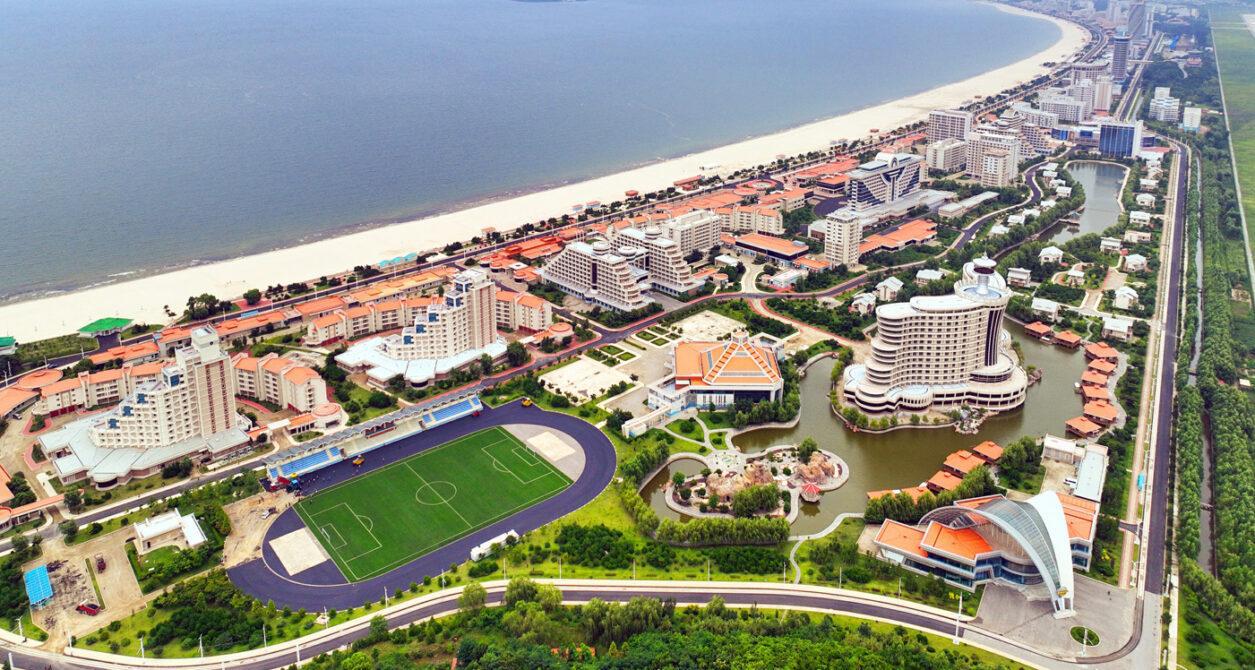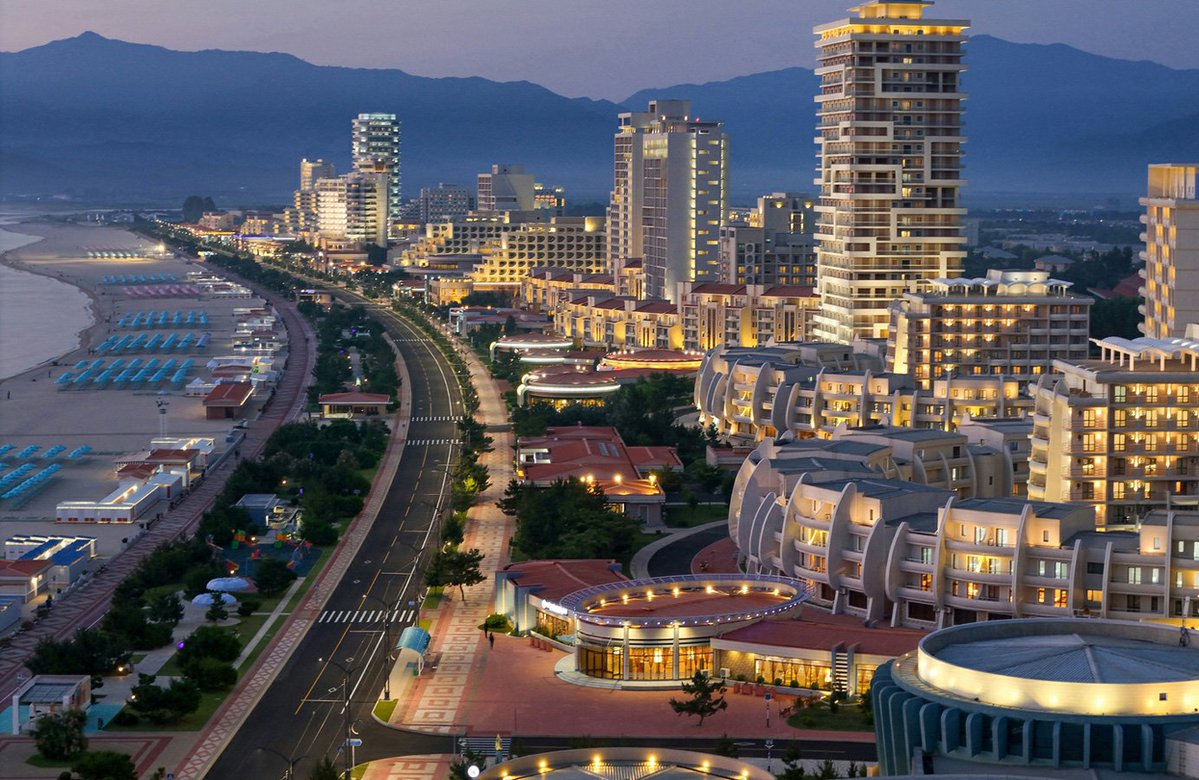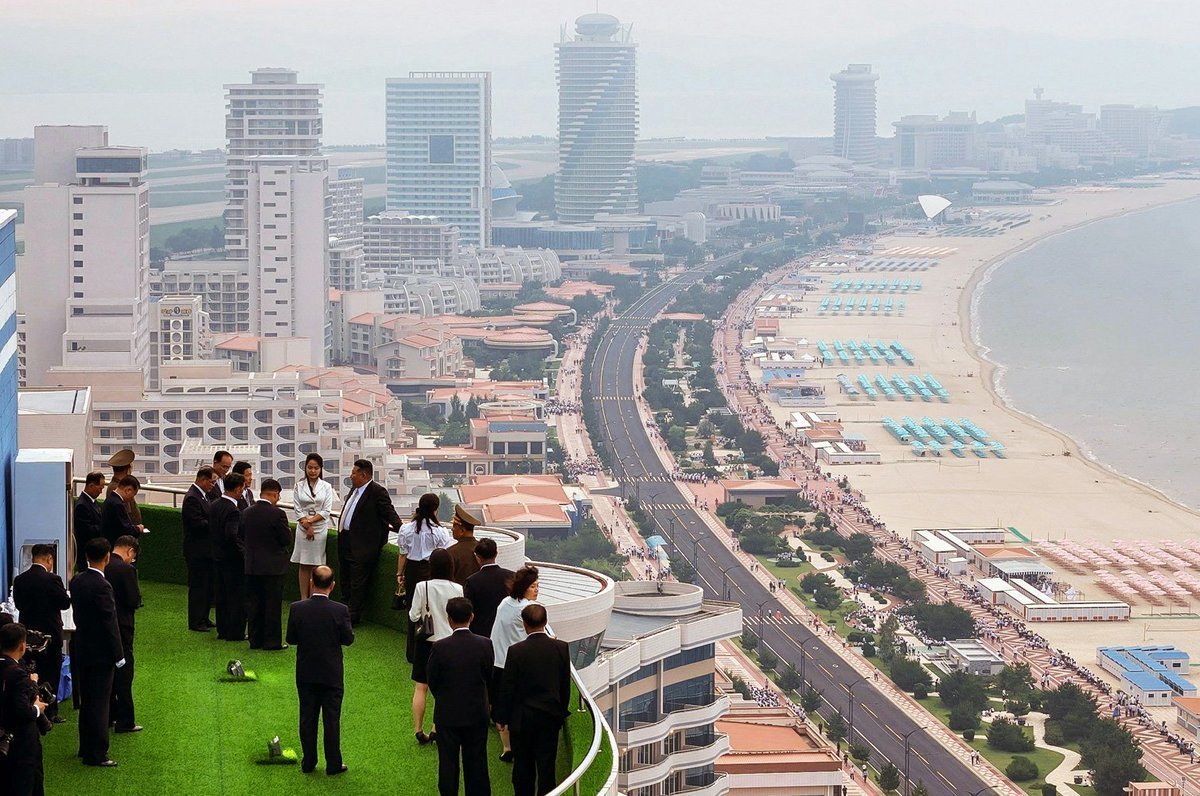Introduction
In a move that surprised observers and cast uncertainty over North Korea’s carefully choreographed tourism ambitions, the country has abruptly barred foreign visitors from its newly inaugurated Wonsan-Kalma Coastal Tourist Zone. The ban comes mere weeks after the grand opening of the sprawling beach resort, long touted as a bold step toward opening up the reclusive nation to global tourism. The sudden reversal raises questions about the real motivations behind Pyongyang’s international outreach, and whether the experiment with controlled modernization is already facing setbacks.

The Wonsan-Kalma Coastal Tourist Zone: Kim’s Tourism Gamble
Located on North Korea’s picturesque east coast, the Wonsan-Kalma resort was personally championed by leader Kim Jong Un, who has called it “one of the greatest successes this year”. The complex boasts:
- A four-kilometer beachfront lined with high-rise hotels
- Restaurants, entertainment venues, shopping centers, and a water park
- Capacity to accommodate up to 20,000 visitors at full capacity
State media and promotional materials marketed the zone as a world-class resort intended to attract both domestic and foreign tourists. The project is a centerpiece in Kim’s wider plan to diversify North Korea’s heavily sanctioned economy, betting on tourism as a source of much-needed foreign currency.

The Opening and the Swift Ban
Wonsan-Kalma formally opened to domestic visitors on July 1, 2025, with much fanfare including lavish ceremonies attended by top officials and Kim Jong Un himself. A small group of Russian tourists became the first foreign guests to visit in the following weeks, coinciding with a high-profile visit by Russian Foreign Minister Sergey Lavrov. Lavrov praised the development and expressed hope for growing Russian tourism to the site.
However, within weeks of these visits, North Korea’s tourism authority abruptly announced that “foreign tourists are temporarily not being accepted” at the resort, with no further explanation or timeline for resuming international access. This rapid policy reversal has dimmed prospects for the mega resort and thrown its future—and North Korea’s broader tourism ambitions—into doubt.
Possible Reasons Behind the Ban
No official explanation has been provided for the decision to bar foreigners only weeks after the doors opened. Analysts and observers have put forward several possible factors:
Negative Publicity from Russian Media: Reports emerged that a Russian journalist visiting with Lavrov suggested many of the site’s visitors appeared to be mobilized locals rather than genuine holidaymakers, raising concerns over the authenticity of North Korea’s presentation.
Control and Image Management: North Korea remains deeply cautious about outside influence. Allowing greater numbers of foreign tourists could lead to leaks of information or images that undermine state narratives.
Difficulties Attracting Non-Russian Tourists: Analysts noted the relative isolation of the resort, high costs, and logistical challenges for foreign visitors, particularly from China and elsewhere, may have also played a role in the government’s rethink.
Precedents of Abrupt Policy Shifts: North Korea has a history of reversing short-lived openings to outsiders, as seen with the Rason Special Economic Zone and previous brief windows for Western tourists earlier in 2025.
The Broader Context: Tourism in Isolated North Korea
Prior to the COVID-19 pandemic, North Korea received about 350,000 foreign tourists annually, with roughly 90% coming from China. After abruptly shuttering its borders in early 2020, limited steps toward reopening began in late 2023 and early 2024, including special tours for Russians and select Westerners to restricted cities. Yet these initiatives have repeatedly been halted without notice, often for opaque reasons.
The Wonsan-Kalma project was especially ambitious, reflecting both Pyongyang’s need for hard currency and its ambivalence about open contact with foreigners. Authorities face a tightrope walk between showcasing a modern, inviting image and maintaining strict social, political, and informational controls.
What’s Next for North Korea’s Tourism Sector?
The ban’s indefinite length leaves the resort’s future unclear. Some analysts believe the closure is a temporary measure to limit fallout from the negative Russian media coverage, suggesting at least a theoretical possibility of reopening in the future. Others argue the move underscores deeper tensions in North Korea’s approach to tourism: namely, the regime’s ongoing struggle to balance its desire for foreign investment and exposure with its overwhelming fear of foreign influence and loss of control.
Until further notice, the Wonsan-Kalma Coastal Tourist Zone will remain off-limits to the very foreign tourists it was built to attract, serving as a stark reminder that in North Korea, even grand openings can quickly become closed doors.

